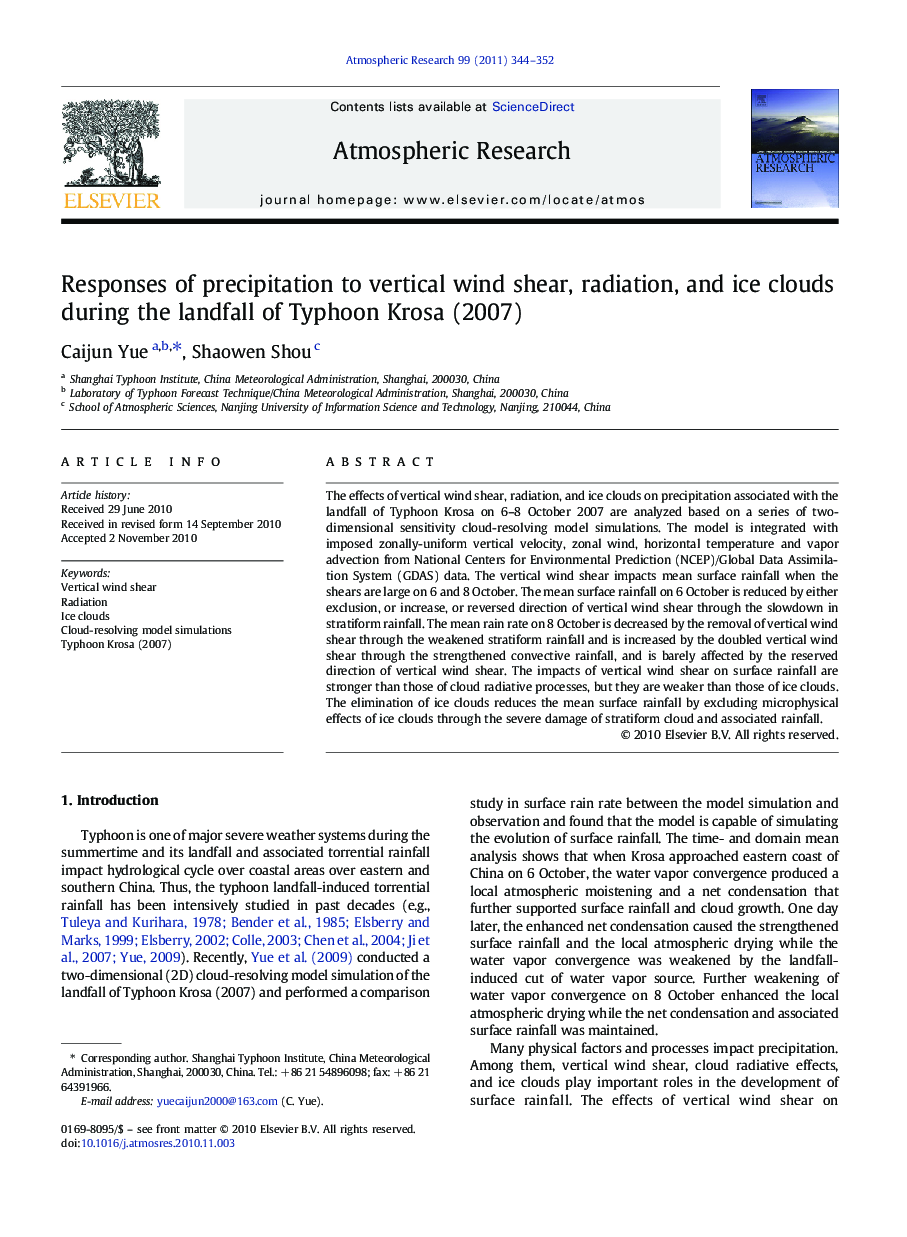| Article ID | Journal | Published Year | Pages | File Type |
|---|---|---|---|---|
| 4450563 | Atmospheric Research | 2011 | 9 Pages |
The effects of vertical wind shear, radiation, and ice clouds on precipitation associated with the landfall of Typhoon Krosa on 6–8 October 2007 are analyzed based on a series of two-dimensional sensitivity cloud-resolving model simulations. The model is integrated with imposed zonally-uniform vertical velocity, zonal wind, horizontal temperature and vapor advection from National Centers for Environmental Prediction (NCEP)/Global Data Assimilation System (GDAS) data. The vertical wind shear impacts mean surface rainfall when the shears are large on 6 and 8 October. The mean surface rainfall on 6 October is reduced by either exclusion, or increase, or reversed direction of vertical wind shear through the slowdown in stratiform rainfall. The mean rain rate on 8 October is decreased by the removal of vertical wind shear through the weakened stratiform rainfall and is increased by the doubled vertical wind shear through the strengthened convective rainfall, and is barely affected by the reserved direction of vertical wind shear. The impacts of vertical wind shear on surface rainfall are stronger than those of cloud radiative processes, but they are weaker than those of ice clouds. The elimination of ice clouds reduces the mean surface rainfall by excluding microphysical effects of ice clouds through the severe damage of stratiform cloud and associated rainfall.
Research highlights► We modeled precipitation processes of Typhoon Krosa (2007). ► The vertical wind shear impacts mean rainfall. ► The exclusion of radiation increases mean rainfall. ► The exclusion of ice clouds reduces mean rainfall. ► Rainfall response to ice clouds is stronger than to vertical wind shear and radiation.
